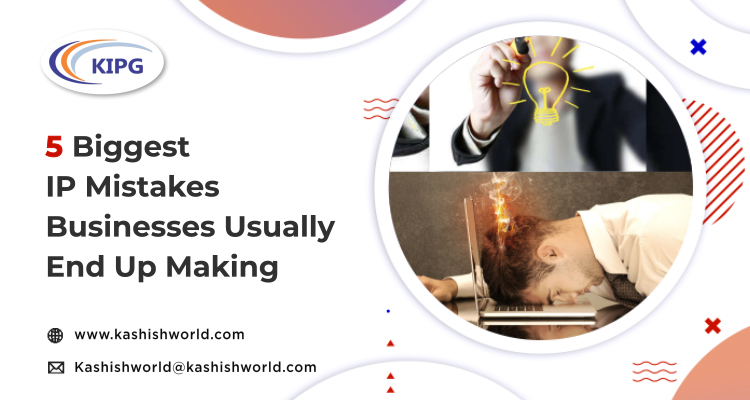
For every other business out there, Intellectual Property Rights (IPRs) always prove to be valuable assets. Trademarks safeguard a brand name and ensure that only the trademark owner uses it. Patents and utility models safeguard new technologies, processes, methods, and inventions and establish a monopoly over them. Industrial designs safeguard the ornamental or aesthetic aspect of a product. Copyright protects the rights of authors of creative works like literary, dramatic, musical, and artistic, along with cinematograph films and sound recordings. Registering, owning, protecting, and enforcing IPRs can lead to significant commercial advantages, which, in turn, provide higher revenues and profits.
The practice of Intellectual Property (IP) law quite often involves dealing with some consequences of the past mistakes that businesses usually make during their initial stages of formation. At that time, their primary focus is on their overall survival and growth in the market, due to which, they tend to overlook the importance of IP or stay unaware of the IP issues that can give rise to liability and undermine the protection of valuable IP assets. In this article, we’ll be discussing the biggest IP mistakes that businesses usually end up making, along with some suggestions on how to avoid them.
- Failing to Identify & Protect Your IPRs
For understanding the different assets that your business owns and could be protected as IPRs, it is always recommended to consult an IP expert. Remember, every acquired and well-protected IPR can provide an excellent opportunity for better commercial performance.
Without adequate IP Protection in place, your competitors in the industry can easily copy your brand and its offerings. Integrating IP protection in your business model, along with other crucial aspects like R&D, production, digital marketing, is vital for the long-term success of your business. If you fail to safeguard your IP assets at the right time, it may lead to many problems down the road that might be arduous or even impossible to resolve.
- Choosing Inappropriate Brand Names for Products or Services
Business companies usually commit the mistake of not paying due attention to the brand name for their products or services. What they generally do is consider alternative brand names solely from a marketing point of view; thereby, giving very little or absolute no thought to the legal consequences of the brand name. If the chosen name is confusingly similar or identical to an already existing company or brand name, this approach can undoubtedly give rise to liability and marketing setbacks. Additionally, it may lead to liability for unfair competition or Trademark Infringement. Although a new company in the market is most likely to receive a cease and desist notice from another business company with a superior claim to the brand name, the consequent name change and accompanying loss of marketing momentum and reputation can obstruct the company’s growth.
All brand names for products or services should be monitored well by expert Trademark Attorneys to identify any obstacles to the business company’s visualized use. Furthermore, related marks like domain names, logos, and taglines should be monitored too. Once a business company is ascertained that the brand name is available, it should go ahead with registering the same as a trademark.
Selecting an appropriate trademark goes beyond the mere availability for its registration. Even in cases where the selected trademark isn’t infringing upon any already Registered Trademark, one can commit other mistakes too. The most common one is choosing a weak trademark. Descriptive marks, i.e., the ones that purely describe the class of goods, are the weakest. Descriptive marks obtain very little or absolute no protection under
Trademark Law. The strongest trademarks are unique in some way or the other. Hence, it is highly advisable to select a strong mark, be it arbitrary, coined, or fanciful, to obtain the broadest Trademark Protection.
- Showing or Disclosing Your Invention before Filing a Patent Application
In most countries around the world, an invention can be patented only if it has not been disclosed or made publicly available before its date of application. In general, if an invention is made publicly available anywhere in the world before the application date, the right to apply for a patent for that invention is lost. Hence, inventors and businesses must consult with their Patent Attorneys during the early R&D stage itself to ensure that they don’t lose their Patent Rights.
- Not Using Industrial Designs Rights
Industrial Design Rights offer an affordable, easy, and quick way to protect the ornamental or aesthetic aspect of a product that is new and possesses an individual character. The specific ornamental or aesthetic aspect of the product in question will be available only to you and your business, and your competitors won’t be able to copy it.
- Signing Problematic Licensing Agreements
Business companies and firms often enter into licensing agreements with others to ease their growth. However, what happens frequently is that businesses end up committing the mistake of granting long-term, exclusive licenses without placing appropriate limits and controls on the licensee. Entering into exclusive licensing agreements without a strategic plan in mind can often restrict a company’s ability to exploit its IP assets. To avoid such a situation, an exclusive licensing agreement should ensure that the licensee moves quickly and efficiently to distribute and market the technology in the said agreement by including the requirements of minimum marketing expenditures, minimum royalties, minimum quotas, or minimum market share goals. The terms of such an agreement should clearly state that if the conditions mentioned are not met, the company might, at its option, either call the exclusive license off or transform it into a non-exclusive license. By doing the same, business companies can engage well with a new and more effective licensee to assist in the exploitation of their IP assets before they become obsolete.

